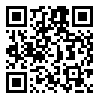Volume 25, Issue 2 (9-2019)
Research on Information Science and Public Libraries 2019, 25(2): 191-231 |
Back to browse issues page
Shahid Beheshti University , m_shaghaghi@sub.ac.ir
Abstract: (4442 Views)
Purpose: in this article I tried to construct a new scale for measuring ethical autonomy of public librarians by rereading and reinterpreting the reflections of ethical philosophers on the concept of autonomy.
Methodology: this research implemented in two phases. In the phase 1, I used documentary research method and conceptual analysis approach to find and analyze key ideas of philosophers. By comprehensive search among databases, books, encyclopedias and other resources by keywords like autonomy and heteronomy, I find five philosophers that had detailed ideas about autonomy: Emanuel Kant, John Rawls, Michael Sandel, Alasdair McIntyre and Charles Taylor. In the phase 2, for credibility analysis I used survey method. After construction an ethical dilemma questionnaire based on Nicole (2008) and development of it by means of the results of conceptual analysis, 406 public librarians of Iran Public Libraries Foundation were chosen from all over of Iran by Stratified Sampling method. These librarians were chosen from 704 librarians that passed the exam of reader’s advisory excellence in 2016. The link of online questionnaire were sent to the email of librarians and data was gathered for analysis. For reliability analysis, I used split-half, composite reliability and Cronbach’s alpha measures. Content Validity Index (CVI), convergent validity, divergent validity (discriminant validity) measures were used for validity analysis.
Findings: results showed that autonomy is a concept with individual and social dimensions. It rooted in Kant’s idea of autonomy (rejecting dependency to natural desires and inclinations in ethical situations), continued in Rawls’s idea of justice (remote distance from ends and living in a well-ordered society and entering in instrumental construction of the present by informed consent), critiqued by Sandel (autonomy is reflexive construction of the self by existing with others with common goals) and McIntyre (autonomy is best implementation of social role and transcending it to an excellent condition) and paradigmatically shifted in the work of Taylor (autonomy is being best actor in the realm of four fundamental ethical intuitions without infringing them). Autonomy of different job holders like public librarians distinguishable in the ethical dilemmas and we started to measure it by constructing 22 dummy dilemmas based on 11 dimensions (integrity, fraud, cover-up, discrimination, business security, promise keeping, blackmail, manipulation, environmental security, privilege information, and pornography) in the library situations and philosophical dimensions of autonomy under dilemmas (two dilemma for each dimension). Flexibility (on the basis of Taylor’s idea of autonomy) were chose as a main difference between autonomy and heteronomy and I used ideas of Kant, Rawls, Sandel and McIntyre for designing eight autonomous and heteronomous alternatives below each dilemma. Results of reliability and validity analysis showed good measures except question 18.
Originality/Value: in this research, I tried to construct a new scale for measuring autonomy and heteronomy based on philosophical dimensions of autonomy to study job holder’s ethical tendencies.
Methodology: this research implemented in two phases. In the phase 1, I used documentary research method and conceptual analysis approach to find and analyze key ideas of philosophers. By comprehensive search among databases, books, encyclopedias and other resources by keywords like autonomy and heteronomy, I find five philosophers that had detailed ideas about autonomy: Emanuel Kant, John Rawls, Michael Sandel, Alasdair McIntyre and Charles Taylor. In the phase 2, for credibility analysis I used survey method. After construction an ethical dilemma questionnaire based on Nicole (2008) and development of it by means of the results of conceptual analysis, 406 public librarians of Iran Public Libraries Foundation were chosen from all over of Iran by Stratified Sampling method. These librarians were chosen from 704 librarians that passed the exam of reader’s advisory excellence in 2016. The link of online questionnaire were sent to the email of librarians and data was gathered for analysis. For reliability analysis, I used split-half, composite reliability and Cronbach’s alpha measures. Content Validity Index (CVI), convergent validity, divergent validity (discriminant validity) measures were used for validity analysis.
Findings: results showed that autonomy is a concept with individual and social dimensions. It rooted in Kant’s idea of autonomy (rejecting dependency to natural desires and inclinations in ethical situations), continued in Rawls’s idea of justice (remote distance from ends and living in a well-ordered society and entering in instrumental construction of the present by informed consent), critiqued by Sandel (autonomy is reflexive construction of the self by existing with others with common goals) and McIntyre (autonomy is best implementation of social role and transcending it to an excellent condition) and paradigmatically shifted in the work of Taylor (autonomy is being best actor in the realm of four fundamental ethical intuitions without infringing them). Autonomy of different job holders like public librarians distinguishable in the ethical dilemmas and we started to measure it by constructing 22 dummy dilemmas based on 11 dimensions (integrity, fraud, cover-up, discrimination, business security, promise keeping, blackmail, manipulation, environmental security, privilege information, and pornography) in the library situations and philosophical dimensions of autonomy under dilemmas (two dilemma for each dimension). Flexibility (on the basis of Taylor’s idea of autonomy) were chose as a main difference between autonomy and heteronomy and I used ideas of Kant, Rawls, Sandel and McIntyre for designing eight autonomous and heteronomous alternatives below each dilemma. Results of reliability and validity analysis showed good measures except question 18.
Originality/Value: in this research, I tried to construct a new scale for measuring autonomy and heteronomy based on philosophical dimensions of autonomy to study job holder’s ethical tendencies.
Type of Study: qualitative |
Subject:
profesional ethics, information ethics
Received: 2019/07/5 | Accepted: 2019/10/16 | Published: 2019/10/16
Received: 2019/07/5 | Accepted: 2019/10/16 | Published: 2019/10/16
| Rights and permissions | |
 |
This work is licensed under a Creative Commons Attribution-NonCommercial 4.0 International License. |


